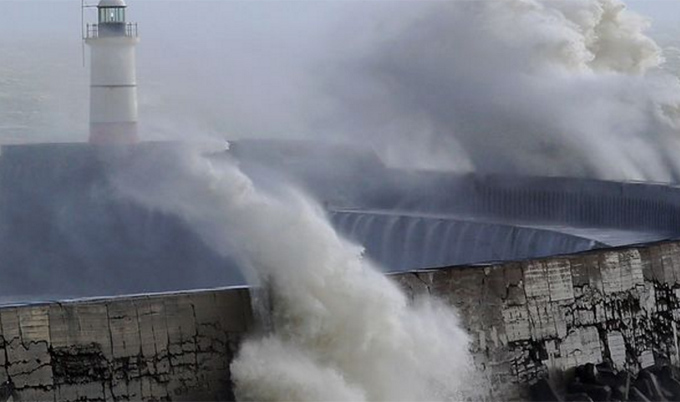Storm Doris
Comment: Giving dangerous weather a human name makes us more wary
Published on: 24 February 2017
Writing for The Conversation, Dr Elizabeth Lewis discusses the history and the research behind naming storms.

Doris sounds like the sort of name your grandmother might have. It’s not particularly scary. But the name now has a rather different association, after “Storm Doris” tore through the UK. The Met Office, the UK’s national weather forecaster, put much of the country on “amber alert” and reported 94mph gusts along with severe rain and snow.
The Met Office first warned about Doris several days earlier, while it was still travelling across the North Atlantic. The idea is that giving storms human names makes them easy to remember and talk about, meaning people are more aware and prepared when they hit – certainly more prepared than if faced by a generic “high wind forecast”.
This is the second winter season in which the Met Office has run a pilot scheme to name these events. Each summer, it announces a list of names, alternating between male and female in alphabetical order, and the moment a new storm is spotted it acquires the next name on the list. Doris is the 15th storm to be named – and the fourth this season. The Met Office’s thinking is that names will better communicate dangerous, high-impact weather events to the public, and can thus streamline the warning system.
Storm naming was first introduced in 1945 for Pacific typhoons and was quickly picked up by the World Meteorology Organisation and in Europe and America. It is now very common across the world. Just think of “celebrities” such as Katrina, Sandy or Yolanda – the Philippine name for the incredibly destructive Typhoon Haiyan (itself a Chinese name).

The larger British storms often pick up unofficial names anyway. For instance, the 2013 “St Judes Day” storm that travelled across southern England or the 2012 “Toon Monsoon” in Newcastle. But because these events are named after they have happened, different media outlets can confuse the issue by calling them different things – the Newcastle storm, for instance, was also dubbed “Thunder Thursday”.
By having a predetermined list that runs from Angus to Wilbert, the Met Office can name the storm before it hits, allowing a clear and more powerful warning.
What counts as a storm?
While the public and media consider any severe weather event to be a storm, the term has a much more specific meaning in meteorology (winds 10 or above on the Beaufort scale – that’s 55mph, or 89kmh). This meant heavy rainstorms with little wind could slip through unnamed and unhyped, despite the risk of floods. Indeed, heavy flooding just after Christmas 2015 was incorrectly attributed to Storm Frank when it actually came from nameless rainfall – exactly the sort of confusion the names were meant to avoid in the first place.
The Met Office has therefore had to relax its definition of what constitutes a “storm”. This season, all high-impact weather events are named.
But does naming storms actually help?
The most obvious benefit is that a name generates an instant hashtag and search term:
However, there are deeper effects, of which many people won’t even be conscious. Psychologists have shown that naming nonhuman agents and giving them human characteristics has a positive effect on recall and can affect behaviour as we seem to react with the same automatic behaviour to nonhumans assigned personality traits as we would to humans with the same personality traits.
It seems people really are more likely to be aware of Doris or Angus than a nameless storm warning – and indeed the Met’s own research backs this up: a recent YouGov survey has shown that storm naming has influenced behaviour with most people “taking action in some way upon hearing about a named storm”.
The choice of name can also influence perception. For instance, more masculine names and harder to pronounce names are perceived as riskier. Naming is such a powerful technique that some scientists even want to adopt it for diseases and epidemics.
Naming storms is fundamentally about communicating risk. Successful warning systems are based on reliable and effective partnerships between forecasters, the media and emergency planners. Storm naming has an important role to play in the communication of an event, but that is not the same as communicating what action should be taken. While the storm naming scheme has fostered cooperation between the Irish Met Éireann and the UK Met Office, continued and improved collaboration between all agencies involved in natural hazard management is needed to reduce impact further.
Elizabeth Lewis, Research Associate, Water Group, Newcastle University
This article was originally published on The Conversation. Read the original article.



